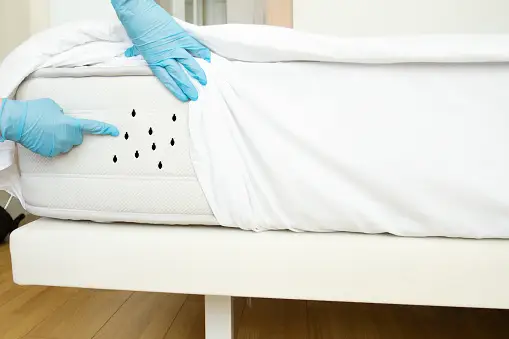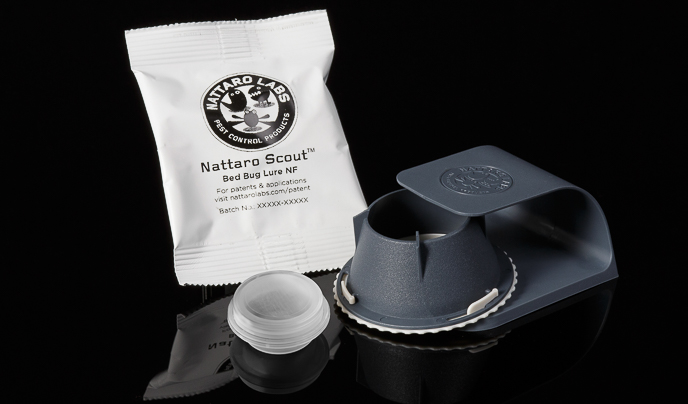Bedbug Awareness Week is a vital campaign aimed at educating the public about bedbugs, their habits, hideouts, and the best practices for controlling and preventing infestations. Bedbugs are small, parasitic insects that feed on the blood of humans and animals. They are notoriously difficult to eradicate once they've established themselves in your home, which is why awareness and prevention are key.
The Biology of Bedbugs
Bedbugs (Cimex lectularius) are small, reddish-brown insects that measure about 4-5 mm in length, roughly the size of an apple seed. They are wingless, with flat, oval bodies that swell after feeding. Bedbugs are nocturnal, preferring to feed on their hosts during the night.

Lifecycle and Reproduction
- Eggs: Female bedbugs lay tiny, white eggs in hidden crevices. These eggs are about 1 mm long and hatch within 6-10 days.
- Nymphs: Newly hatched bedbugs, called nymphs, are translucent and gradually turn reddish-brown as they mature. Nymphs must feed to molt and progress through five growth stages before becoming adults.
- Adults: Adult bedbugs can live for several months, depending on environmental conditions and access to food. Under favorable conditions, they can produce up to three generations per year.
Common Hideouts
Bedbugs are experts at hiding, which makes them challenging to detect. They typically stay close to their food source, making bedrooms the most common infestation sites. Here are some of their favorite hiding spots:
- Mattresses and Box Springs: Bedbugs often hide in seams, tufts, and folds.
- Bed Frames and Headboards: Cracks and crevices in bed frames and headboards are ideal hiding spots.
- Furniture: Upholstered furniture, especially seams and under cushions, can harbor bedbugs.
- Baseboards and Electrical Outlets: Bedbugs can be found in cracks and crevices near baseboards and behind electrical outlets.
- Luggage and Clothing: Bedbugs can hitchhike into homes via luggage, clothing, and used furniture.
Signs of an Infestation
Identifying an infestation early is crucial for effective control. Look for these signs:
- Bite Marks: Small, red, itchy welts on the skin, often in a line or cluster.
- Blood Stains: Small blood stains on sheets or pillowcases from crushed bedbugs.
- Fecal Spots: Dark, rusty-colored spots on bedding, walls, and furniture.
- Shed Skins: Exoskeletons from molting nymphs.
- Live Bedbugs: Seeing live bedbugs is a clear sign of an infestation.

BUY NOW
Control and Prevention Methods
Preventing and controlling bedbug infestations requires a combination of vigilance, hygiene, and professional intervention. Here are some effective strategies:
Prevention
- Inspect Secondhand Items: Carefully inspect used furniture, mattresses, and clothing before bringing them into your home.
- Reduce Clutter: Keep your home tidy and reduce clutter to eliminate hiding places.
- Protect Your Bed: Use mattress encasements and box spring covers designed to prevent bedbugs from entering or escaping.
- Regular Cleaning: Vacuum regularly, especially in bedrooms, and dispose of the vacuum bag in a sealed plastic bag.
- Travel Precautions: When traveling, inspect hotel rooms for signs of bedbugs and keep luggage off the floor and bed. Wash and dry clothes on high heat after returning home.
Control
- Identify and Isolate: If you suspect an infestation, identify the source and isolate the affected areas. Use bedbug-proof encasements to trap bedbugs on mattresses and box springs.
- Heat Treatment: Bedbugs cannot survive at temperatures above 118°F (48°C). Use steamers or professional heat treatments to kill bedbugs and their eggs.
- Chemical Treatments: Insecticides can be effective, but should be used with caution. Always follow label instructions and consider professional pest control services for severe infestations.
- Professional Extermination: For extensive infestations, hiring a licensed pest control professional is often necessary. They have access to more effective treatments and can ensure thorough eradication.
Long-Term Strategies
- Monitoring: Use bedbug interceptors under bed legs to monitor and capture bedbugs. Make use of products like Nattaro Scouts Regular inspections can help detect reinfestations early.
- Education: Stay informed about bedbugs and educate others. Awareness is key to preventing the spread of infestations.
 BUY NOW
BUY NOW
Bedbug Awareness Week serves as a reminder of the importance of vigilance and proactive measures in the fight against bedbugs. By understanding their biology, identifying their hiding spots, and implementing effective control and prevention methods, you can protect your home and loved ones from these persistent pests. Remember, early detection and professional intervention are crucial in managing bedbug infestations effectively. Stay informed, stay vigilant, and take action at the first sign of bedbugs to ensure a bedbug-free environment.






 BUY NOW
BUY NOW

